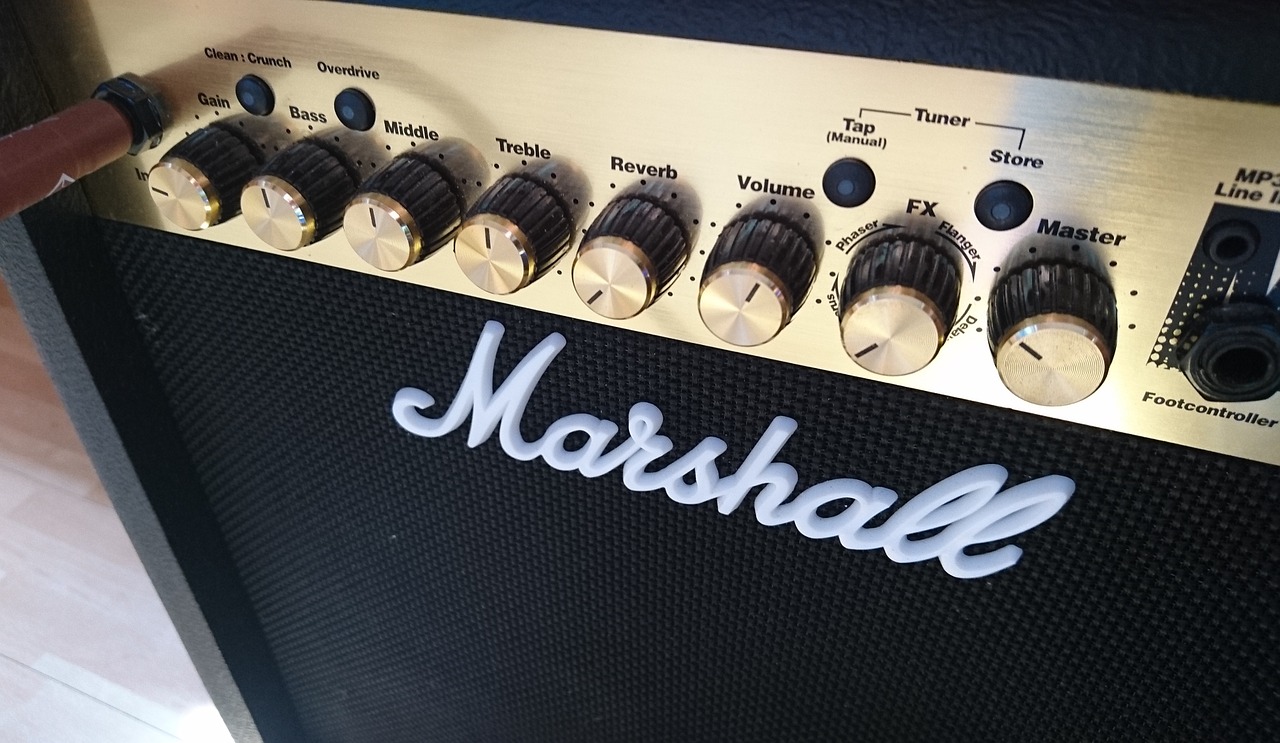 Do you remember the first time you heard your favorite song? The first time you were on a concert and gaped at the awe-striking performance of your favorite band. The day you vowed to yourself that someday, in the near or far future, you will be standing on that stage and people will admire your songs just like you do now? I do not know about you but the moment I decided to buy a guitar I knew literally nothing about music, instruments, and equipment except for the fact that it looked cool and made great music. Learning to play takes a lot of time but before you do that you have to buy your guitar and amp (because in my mind guitar and amp go together like peanut butter and jam). To buy the amp you got to know more than just the tone you want. It might be a bit overwhelming at first but there are just a few basic things you need to know to be able to find the best amplifier for your needs. Here I will talk about just a few terms that you need to know and what they actually mean.
Do you remember the first time you heard your favorite song? The first time you were on a concert and gaped at the awe-striking performance of your favorite band. The day you vowed to yourself that someday, in the near or far future, you will be standing on that stage and people will admire your songs just like you do now? I do not know about you but the moment I decided to buy a guitar I knew literally nothing about music, instruments, and equipment except for the fact that it looked cool and made great music. Learning to play takes a lot of time but before you do that you have to buy your guitar and amp (because in my mind guitar and amp go together like peanut butter and jam). To buy the amp you got to know more than just the tone you want. It might be a bit overwhelming at first but there are just a few basic things you need to know to be able to find the best amplifier for your needs. Here I will talk about just a few terms that you need to know and what they actually mean.
First things first, know the difference between amplifiers. Tube amps are a totally different beast from solid-state amps. The main difference between a solid-states and tube amp is that solid-state use electronics such as diodes and transistors to amplify while a tube amp has – you guessed it – vacuum tubes to do the same job. Now, which one does what better is a whole other topic. If you still have not figured out which will the best fit for you read up on our blog about “Solid-State Vs. Tube Amplifiers” and you might figure out which one’s better for you.
Just as a side note, you might hear people call tube amps “valve amp” and solid-state a transistor amplifier.
Guitar Amp Terminology
A preamp is the initial part of the amplifier where the signal from the guitar enters. The signal is shaped in the preamp before sent for amplification to the power amp.
Power Amplifier is where the signal from the preamp goes to. The main function of this section of the equipment is to amplify the signal and send it to the speaker.
Speaker – It might be pretty obvious what speakers do but just for the sake of continuity – after the signal goes through a preamp and then power amp it enters speaker to reproduces the frequency.
Head – This is the part of the amplifier where the preamp and power amp is located. The speaker is usually not in the head of the amplifier but connected to it.
Cabinet – This is where the speakers are located. It is connected to the head (preamp and power amp).
Watts – You have probably heard of watts in one of your glasses as you were drooling away and not keeping any attention. Amplifier watts are the electrical power that allows your equipment to amplify the signal. Usually the higher the wattage the more power/amplification it can do but it differs between a tube and solid-state amps.
Crunch – This is one of those terms you will hear a lot. You might have figured it out intuitively what “crunch” might be. This is basically when the gain is set on high (too high for the clean sound) that it distorts the clean sound and makes it thicker.
Distortion – You have probably heard distortion more times than you know or have realized. Distortion is basically when the preamp is put on high while the gain is low. This results in lack of necessary voltage.
Channel – Channel is probably one thing you have to always keep in mind. It is an independent preamp “voicings”. Multi-channel guitar amps may have 2 or more channels, such as a “clean” channel, or a “dirty/crunch” channel. Each channel typically has its own set of controls to adjust the tonal characteristics of the input signal.
FX – FX or the effects of an amplifier give the sound enhancements such as delay and chorus. As a beginner, you might want to have some basic effects on your amplifier but you do not need to go overboard with it. If your amp does not have effects you can always get pedals for it.
EQ – Also known as an equalizer is the circuit that balances out all signal frequencies. You will usually notice the description of your amp to have midrange, treble, and bass EQs. The more EQs you have the better you will control your signal, thus the sound you produce.
Conclusion
I remember the jitters I got the first time I performed. It was not a big stage, just a couple of people – and probably 90% of those people were there because they were friends and family. Your first gig is a beginning of a new stage. It is exhilarating and frightening, heaven and hell and everything in between.
BUT to get to that “first stage” of your music career there is a hell of a lot you need to do before. Getting a guitar is an obvious one. The next step is an amplifier which, at least for me, was the harder equipment to choose. The reason? There are so many technical terms I had to learn and incorporate into my glossary so that I did not sound like a complete novice when I went into the store and the seller hit me with all the possible information that scrambled my brain.
In any case, this blog gave you just a few basic terms you need to know. I won’t lie, knowing everything will take time. You probably won’t be able to figure all of it out before you buy your first amp, maybe even second. Trust me, persistence is the key and one day you will realize that you play, speak, and breathe amp language. Good luck and, of course, if you have not figured out what amp is the best fit for you, check out our articles about the best cheap amplifiers for beginners or the best amplifiers under $300. Good luck and have fun!






